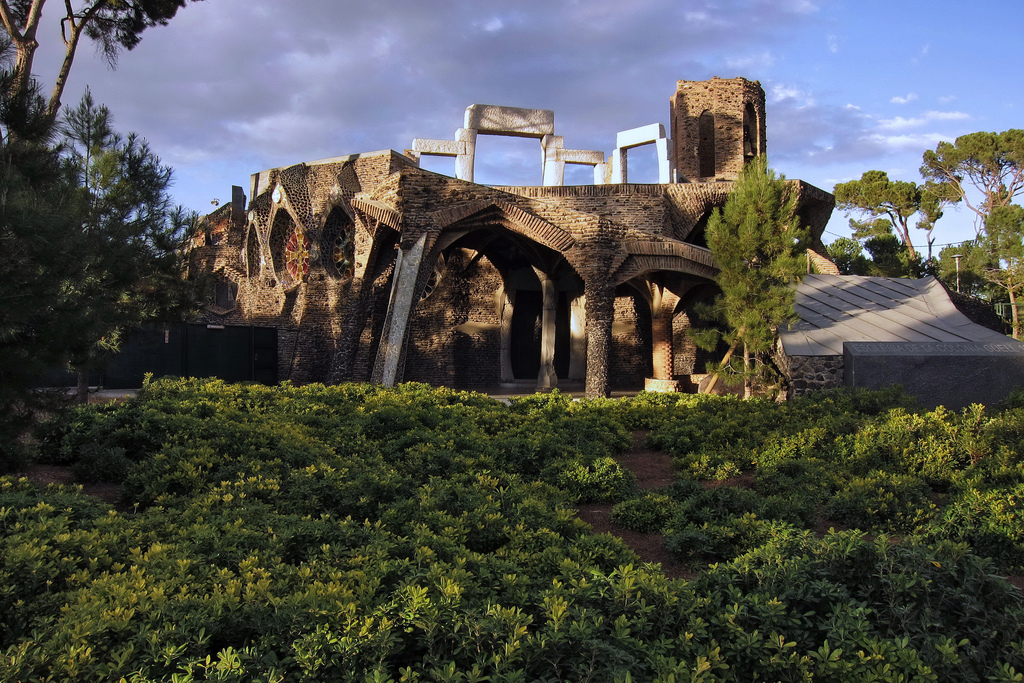
Tracing the Life of Gaudí Tour – Barcelona, Spain, takes you around buildings that seem to manipulate nature-based forms. Antonio Gaudí built these flowing, extravagant structures with voluptuous colors and textures, one of the most famous and important Spanish architects. You can find those majestic pieces of art in the great Catalan capital, Barcelona. However, if you would like to go in deep, then you should try to follow the trail of Gaudí’s life. Start from Reus and follow throughout the astonishing landscapes of Catalonia, which had a huge impact on him and were a source of inspiration.
Reus
As you’re walking around Reus’ streets you can find the touching, bronze sculpture of the young Gaudí sitting and playing marbles. If you start your journey here, you will be able to go step by step into his life. This way, you can also understand how he comes to create such structures, looking at the natural shapes that surrounded him. If you want to know more about Antonio, then you can visit the Gaudí museum.
Garraf
Once you’re heading back to Barcelona, you should try and take a detour from the main coast road. Now, you get to truly appreciate Gaudí’s unusual work in the small village of Garraf, located between Sitges and Castelldefels. The Güell Bodegas were built between 1895 and 1901, and they were used to store wine. Besides, another masterpiece is easy to reach from this site. The extraordinary crypt of the church of Colonia Güell stands at Santa Coloma de Cervelló, a structure often referred to be the architect’s purest work.

Casa Batlló
Then, deep in the heart of Barcelona, you can find the stunning Casa Batlló. Its curvaceous exterior makes it look as if it was melted in the fierce Spanish sun. The colored ceramic tiles and the stained-glass windows give life to this house. Its balconies are shaped like theatrical masks, and the roof looks like an iguana’s scaly skin.

Casa Milá
Nearby, you will find Casa Milá, which Gaudí also built for the Güell family. Its attraction relies on the wave-like forms of its exterior walls, and its equally fantastic structure.

La Sagrada Familia
Of course, tracing the life of Gaudí wouldn’t be complete if you don’t go to La Sagrada Familia in Barcelona, which is one of his most iconic works. Gaudí said he wanted the cathedral’s structure to resemble a forest full of trees, with huge limestone towers. This was his greatest work, but sadly he wasn’t able to finish it.

Parque Güell
Here is where your journey will finish, on a hill in the suburb of Gracia. This public park has Gaudí’s most vibrant work, including the renowned mosaic-tiled bench seat surrounded by candy-colored pavilions. If you want to relax and enjoy the sunset like most people in Barcelona, then you should definitely go there.

How get there
Many airports from different points of Europe fly to Reus Airport, located by the beaches of Costa Daurada.
Inside Information
If you want to visit several of Gaudí’s buildings, you should buy a Gaudí Route ticket. This allows you to discount off the entry fees. Main attractions usually get busy so be ready to wait and make a line. But if you get there earlier, then things may be a little different.
History
Gaudí was born in 1852, in a rural area named Reus. He was the younger son of an ironmonger and boilermaker. Since he had several difficulties to walk because of his rheumatism, he was forced to stay at home. For that reason, he absorbed the elements of nature that surrounded his house, and later on, he used them to create the amazing buildings he made.
If you loved this article or found it useful, don’t forget to share it with your adventurous and travel-hacking friends! If you want more posts like this, follow us on Youtube, Instagram, Pinterest, Twitter, Facebook or Reddit and subscribe to our newsletter!

